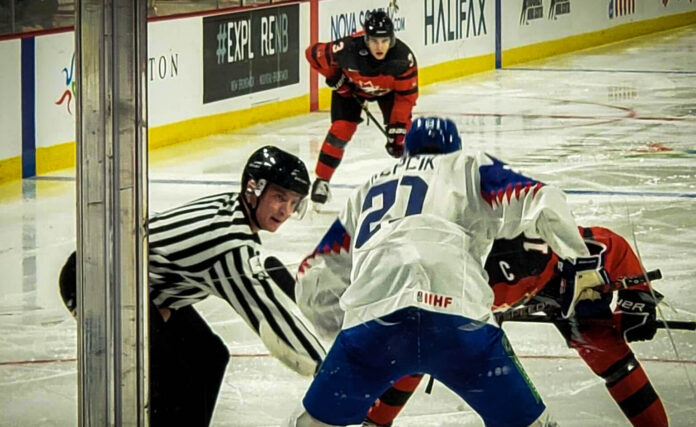

Matthew Hanson has played hockey his whole life, but following in his dad’s skates, he was convinced to switch out the jersey for the striped sweater.
Officiating is now part of Hanson’s weekly schedule, working games up to five nights a week, and he’s thankful for the push his dad gave him. His hockey knowledge started at the Timbits U7 level, and it helped him understand the game of hockey to its full extent.
To be an on-ice official is hard work, and while Hanson knows this, the fans may not.
“It’s not as black and white as people might think,” he said.
“Positioning is a huge part of it, because if you’re not in the right position, you’re gonna miss the calls and sometimes the play will just take you out of position. You’re trying to avoid the play so you can’t really see the penalty.”
He preps for each game by warming up on the ice and skating a couple laps. He does this because a player’s speed has become the fastest it’s ever been, which adds an extra layer of difficulty.
“When I did my world junior pre-tournament game, it was ridiculous how fast they were. On TV it doesn’t do it justice, but when you’re there with the players, it’s hard to keep up,” Hanson said.
He admits some calls get missed because they simply can’t see what’s going on. On the flip side, there are some calls where Hanson’s hand shoots up because he thought he saw something, but then thinks to himself, ‘did I really need to call this?’
This is the human element of the game. There will be mistakes.
“Once a game is over, [league officials] come into the room and show us clips of penalties or close offside calls or positioning videos so that we can get at the right spot at the right time,” said Hanson.
“But that’s great because they’ll come in there and tell us what we can improve on [for] our next game.”
Communication between the league and officials is imperative to success because the leagues want games to be called correctly, not have officials become scapegoats for fans. And as for those rowdy fans, Hanson said he blocks them out.
“I try not to let it affect me. I just skate away and don’t really pay attention to it,” he said.
The spectators want their team to win, and a call against is an opportunity for them to release their pent-up anger and frustration on the officials in the game. Although for Hanson, he said it’s important to him to call every game the same way, regardless of an individual player or team on the ice.
With that in mind, it’s not all about the calls for the officials. They talk on the ice to let the players know they’re near, telling the players to battle in the corner or to move the puck. These are all things Hanson does, and more.
“If I’m waiting for a face-off, just try to be friendly, because they’re pretty friendly with me,” he said.
“We’re all humans out there. Players realize that we’re all in it together, all trying to progress and they realize that we’re not their enemies out there. We’re there for the same reason as them: trying to have a good game and trying to move up as well.”
